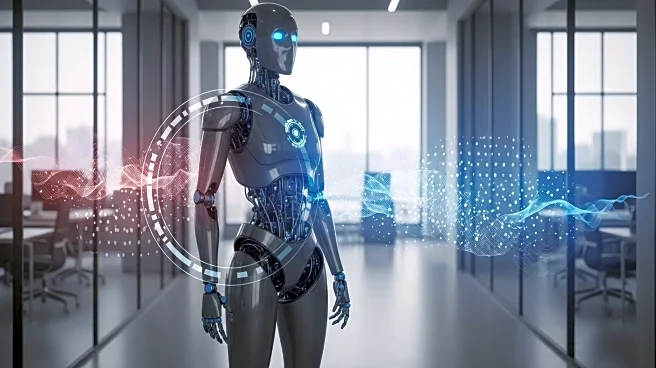What's Happening?
Researchers from BetterUp Labs and Stanford Social Media Lab have introduced the term 'workslop' to describe low-quality, AI-generated work that appears competent but lacks substance. According to a survey of 1,150 U.S.-based employees, 40% reported receiving workslop in the past month. The study suggests that workslop contributes to the lack of return on investment in AI for 95% of organizations. It shifts the burden of correcting or redoing tasks to the recipients, creating inefficiencies. The researchers recommend that workplace leaders establish clear guidelines for AI use to prevent the proliferation of workslop.
Why It's Important?
The concept of workslop underscores the challenges organizations face in integrating AI into their workflows effectively. As AI becomes more prevalent in business operations, ensuring the quality and relevance of AI-generated content is crucial to maximizing its benefits. Poorly implemented AI can lead to increased workloads and reduced productivity, negating potential gains. This study highlights the need for strategic AI deployment and the importance of setting standards for its use, which could influence how companies approach AI integration and training.
What's Next?
Organizations may need to reassess their AI strategies, focusing on training employees to use AI tools effectively and setting clear expectations for AI-generated work. Leaders might implement stricter quality controls and invest in AI systems that offer more reliable outputs. As awareness of workslop grows, companies could prioritize developing AI literacy among their workforce to ensure that AI enhances rather than hinders productivity. This shift could lead to more thoughtful and intentional use of AI, potentially improving overall business outcomes.
Beyond the Headlines
The emergence of workslop raises ethical questions about the reliance on AI in professional settings. It challenges the notion that AI can seamlessly replace human judgment and creativity, highlighting the need for human oversight in AI processes. This development may prompt discussions about the role of AI in the workplace and the balance between automation and human input, influencing future policies and practices in AI deployment.










